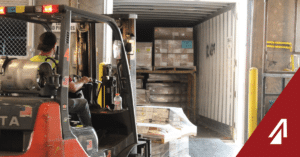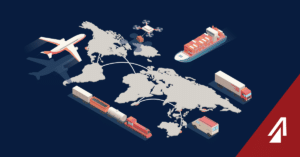The surge in cross-border freight into Mexico is a significant trend reshaping the landscape of international trade and logistics. Several factors drive this phenomenon, including nearshoring, trade agreements, and infrastructure improvements. Let’s delve into an overview and then break it down by verticals to understand the impact on various industries.
Overview
Nearshoring Trends: Nearshoring, the practice of moving business operations closer to the end market, has gained momentum. Many U.S. and global companies are relocating manufacturing and supply chain operations to Mexico due to its proximity to the end market, reducing transportation costs and supply chain risks. This trend is expected to continue, with many projects already underway and foreign direct investment in Mexico projected to grow significantly over the next few years.
Trade Agreements: The United States-Mexico-Canada Agreement (USMCA) has played a pivotal role in facilitating smoother and more advantageous trade conditions between the U.S. and Mexico. The agreement includes provisions that modernize trade relationships and promote economic growth, further boosting cross-border trade.
Infrastructure Investments: Both public and private sectors have heavily invested in improving Mexico’s transportation infrastructure, including ports, highways, and rail systems. These improvements enhance the efficiency and reliability of cross-border logistics.
Vertical Breakdown
Automotive Industry: The automotive sector is one of the primary beneficiaries of increased cross-border freight. Mexico has become a manufacturing hub for many global automotive companies due to its skilled labor force and favorable trade conditions. The sector’s integrated supply chains mean parts often cross borders multiple times before final assembly. This necessitates excellent logistics management to ensure timely delivery, cost efficiency, and supply chain optimization.
Electronics and Technology: The electronics industry also sees significant benefits from nearshoring. Companies are setting up manufacturing plants in Mexico to produce components and finished goods closer to the U.S. market. The benefits include reduced lead times and transportation costs, which allow companies to respond more quickly to market demands.
Food and Beverage: The food and beverage sector is experiencing growth due to increased consumer demand and improved logistics capabilities. Investments in temperature-controlled storage and transportation have improved the shipping of perishable goods across the border, ensuring freshness and quality.
Retail and Consumer Goods: Retailers leverage Mexico’s manufacturing capabilities by sourcing products closer to the U.S. market. This strategy reduces transportation costs, helps companies maintain lower inventory levels, and allows them to respond more swiftly to consumer trends.
Construction and Materials: The construction industry benefits from the increased availability of materials produced in Mexico. With ongoing infrastructure projects and urban development, the demand for construction materials is high, and sourcing from Mexico helps meet these needs efficiently.
Pharmaceuticals and Healthcare: The healthcare sector is also experiencing increased cross-border trade, particularly in pharmaceuticals and medical devices. Mexico’s growing manufacturing capabilities in these areas are helping to meet the rising demand for healthcare products in the U.S.
The explosion of cross-border freight into Mexico is a multifaceted trend driven by strategic business decisions, favorable trade agreements, and significant infrastructure investments. Each industry benefits uniquely, contributing to the overall growth of U.S.-Mexico trade.
As companies continue to optimize their supply chains, the importance of efficient and reliable logistics solutions cannot be overstated. This growing trend enhances economic ties between the two nations and substantially benefits businesses operating in these critical verticals.
For businesses looking to navigate this evolving landscape, partnering with experienced logistics providers can streamline the complexities of cross-border trade, ensuring a seamless and efficient flow of goods.
Contact the ProTrans team today for expert guidance in navigating the impact of increased freight coming into Mexico. With over 30 years of experience in Mexico, our supply chain experts can assist you in understanding regulatory and compliance needs, supply chain impacts, and how to prepare your cross-border freight.



